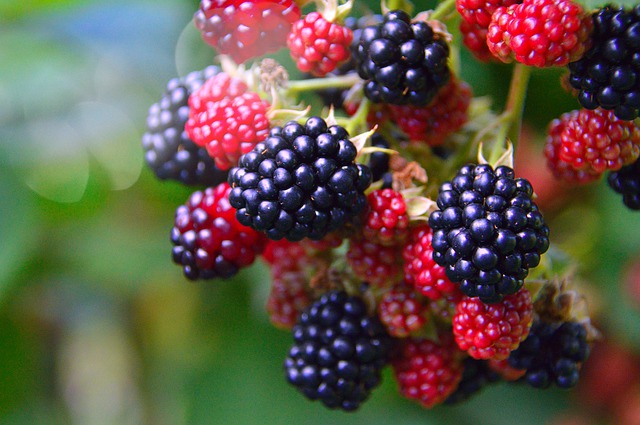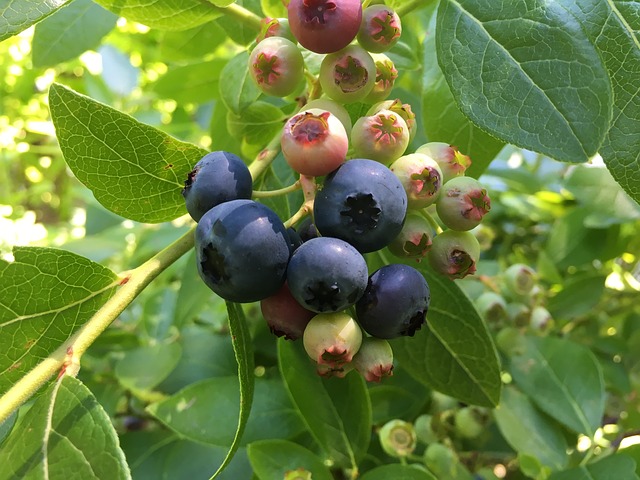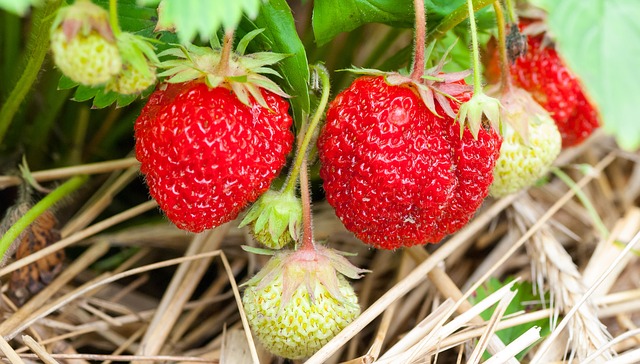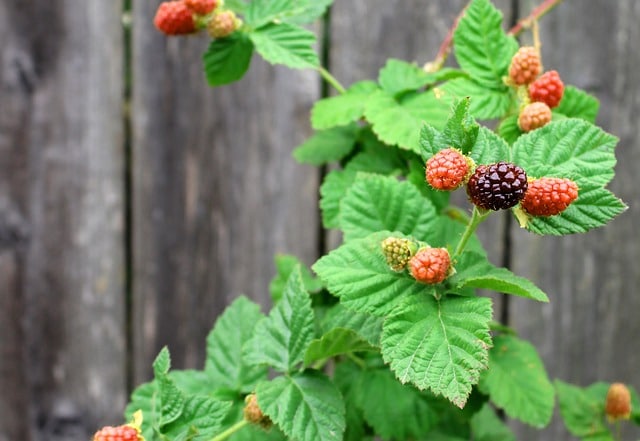Best Berries to Grow in Hot, Dry Climates

As someone who grew up on berries living in Northern Michigan, where they grew like weeds, moving to the Arizona desert presented many challenges with growing berries. I’ve experimented with different types of berries and witnessed other local gardener’s successes or failures with growing berries in hot, dry climates. There are definitely some that do better than others, and others I personally wouldn’t even bother with.
Can you grow berries in a hot, dry climate? Absolutely! The best types of berries to grow in the desert are Blackberries. Under the right conditions and with the proper care it’s possible to grow other berries like Strawberries, Blueberries, Boysenberries, and Goji berries.
You Can Try, But Good Luck
Let’s start with some of the berries that I would flat out avoid if you’re living in a hot, dry climate. I’m always in favor of experimenting and trying new things, so I won’t say to never try, but many have tried and failed with these types of berries. If you have a greenhouse or way of creating a more conducive environment then by all means give it a go.
Raspberries
I have yet to see anyone have success growing raspberries in our Arizona Desert. A lot of plants that don’t like our summer heat can still thrive when given adequate shade throughout the day, but some plants even with the shade won’t make it. Also, Raspberries do need enough sun to grow, so it becomes a lose-lose situation.
As temps soar in the summer months, the raspberry plants fry in the heat. I’m sure there are some varieties that claim to be more heat tolerant or someone out there that has had some marginal success, but long-term there are better berries to grow in a climate with intense heat. The PH issue becomes another issue altogether.
It’s a Bit of a Challenge
These are the berries that I’ve had or seen others have marginal success with, but still can be difficult for beginner gardeners to attempt. If you’ve been gardening for awhile in hot, dry climates and have an understanding of microclimates and soil PH, then you’re more likely to have a better chance. Here is my list of berries to try with caution:
Blueberries

Growing blueberries in a hot climate like the desert isn’t for the faint of heart. My first attempt was a big fail and I had every intent to move on, until I saw a plant on a clearance rack for $2.50. For that price I figured why not. It turned out that I had learned a lot from my first attempt and my Blueberry plant is now going into its 3rd year.
- First off, if growing blueberries in the desert or anywhere with high PH soils, grow them in a container. Blueberries are so finicky when it comes to PH levels that it’s automatic death in the alkaline soils. It may not show immediately, but eventually the plant will die if the soil isn’t acidic enough. You will start seeing chlorotic or yellowing of the leaves when the PH is too high.
- Second, blueberries need some shade in extreme heat. My blueberry plant gets morning sun until around 10 AM in the summer months, which seems to be enough.
- Lastly, it’s important to get a southern high bush variety which is better able to handle heat and has low chill requirements. I’m growing Misty and I’ve heard good things regarding Sunshine Blue. Many Blueberries are self-pollinating, but produce more with a second variety. I write an in-depth guide here: Growing Blueberries in Hot, Dry Climates.
Strawberries

I’ve had some moderate levels of success with Strawberries. A lot of the same problems that arise with growing blueberries are the same with strawberries. Strawberries are somewhat picky about soil PH, but not nearly as much as blueberries. They like something slightly acidic to neutral, which still makes it difficult planting directly in the ground in alkaline soil types.
Strawberries are frost sensitive which can be a problem during our brief cold snaps and don’t like our intense summer sun. It’s still better to plant in the fall so they can get established, but you’ll need to protect them from frost. If you can keep them happy with some shade protection, frost protection, and proper soil conditions they’ll grow well.
I’ve never been able to produce crops large enough to make it worth my while. For all the work I put into them, to only end up with a couple handfuls of strawberries prevents me from continuing to attempt to grow them. Mesabi, Quinault, Everbearing, Sequoia are all varieties to consider.
These are the Winners
Now that we’ve discussed the more challenging berries to grow or avoid growing, let’s take a look at the ones you should be growing. These are berries that I’ve been able to grow and have seen consistent proven results growing them in the desert. Drum roll please, here are the best berries to grow in hot, dry climates.
Blackberries
This is my number 1 when it comes to growing more of the traditional temperate type of berry in a hot climate. Unfortunately I’ve seen very little triumphs with thorn-less varieties, mainly just thorny plants. PH still can be an issue, but blackberries can take slightly alkaline soil. Utilize soil sulphur, pine mulch, peat moss, and compost to help offset some of the alkalinity.
A trellis may be needed depending on the variety. Most erect varieties can go without trellising, but it’s still a good idea to provide some support. Annual pruning is required to clear out the old canes. Keep in mind that blackberries spread through underground runners, so they can be a bit invasive. My blackberries run along an east facing wall and receive mostly early morning sun. I believe they can handle a bit more sun, but wouldn’t put them in full sun in the summer months of a desert climate. Rosborough is a great variety for hot, dry climates.
Boysenberries

A Boysenberry is a hybrid blackberry-loganberry-raspberry combo. Boysenberries grow a little more bushy then Blackberries, but still need similar pruning. They fruit on last years canes, so after fruiting the canes can be pruned back to the ground. The plants should be trellised and can also thrive in containers. Boysenberries like a neutral soil, but can handle slightly alkaline or acidic soil. It’s a good idea to provide some afternoon shade in extreme heat.
Goji Berries
These aren’t necessarily traditional berries per se, but I figured I’d add them to the list, since they’re still considered a berry. I’ve had good look with growing Goji berries and they tend to grow rapidly. They will produce an abundant amount of berries at a young age. Goji berries aren’t my favorite for taste, but have major health benefits. Wolf berries are a close relative to the Goji and are native to the desert. Traditional Goji benefits from afternoon shade in the hot months. They actually prefer a slightly alkaline soil.
Mulberries
Technically this is a fruit tree, but the fruit is still reminiscent of a traditional berry. As long as you have the space, as these can become really large trees, a mulberry is a simple tree to grow. It really takes minimal care to grow a mulberry in a hot, dry climate. The berries have a similar look to a blackberry, but I find them to be a bit sweeter and less acidic. These trees are rapid growers that handle heat and cold well. Check out my growing guide: Growing Mulberries in hot, dry climates.
All in all, berries can be a fussy crop to grow in a hot, dry climate. Berries tend to be more prevalent in cooler regions of the world, with high amounts of annual rainfall. Even though a hot climate isn’t ideal for growing berries, it can be done depending on the variety and the work you’re willing to put in to it.
Please comment below on anything that you’ve enjoyed from this post or your experiences growing berries in hot climates.

Great information here! This makes a great reference for me and has inspired me to try growing some blueberries. Love your posts!